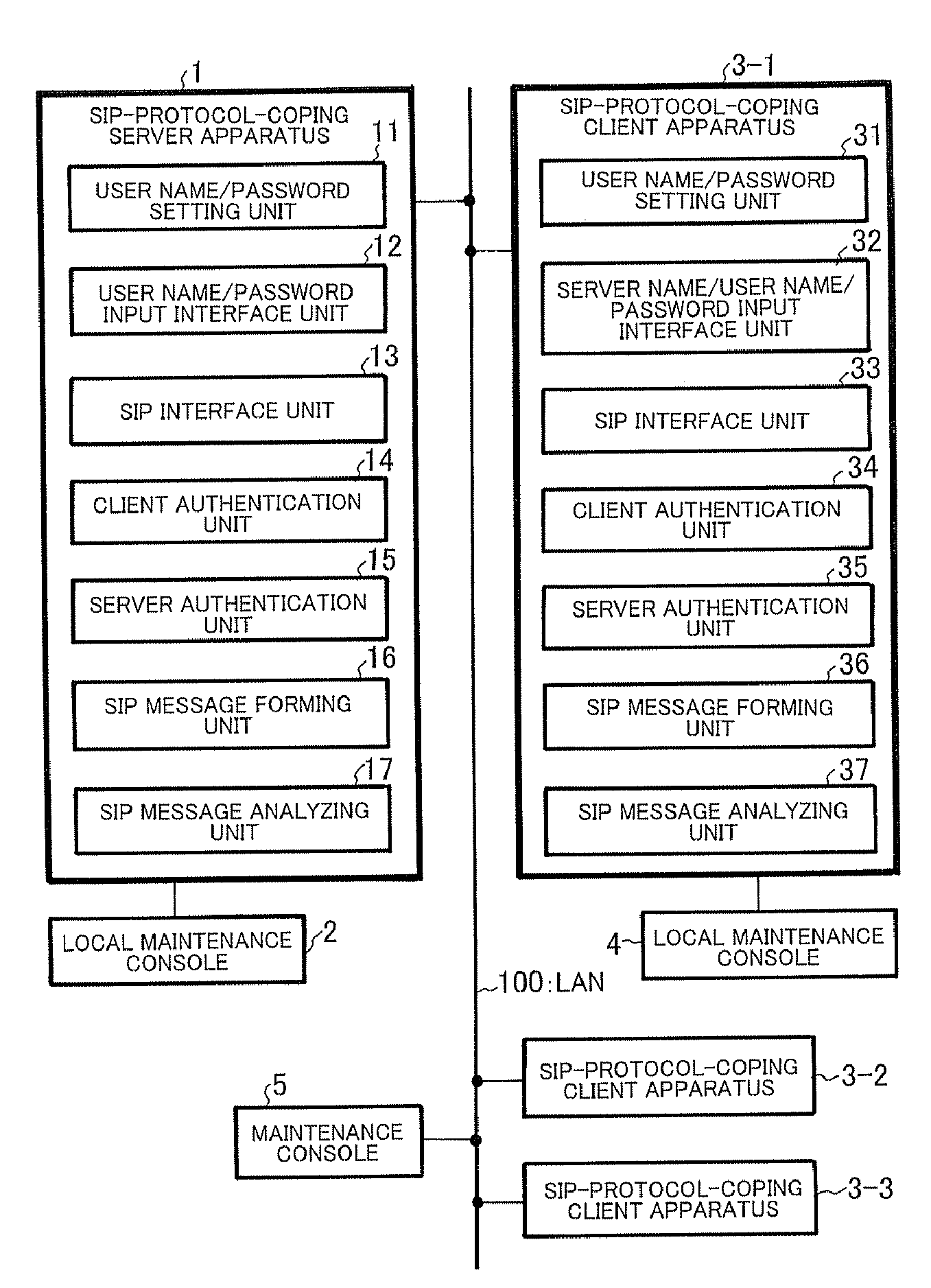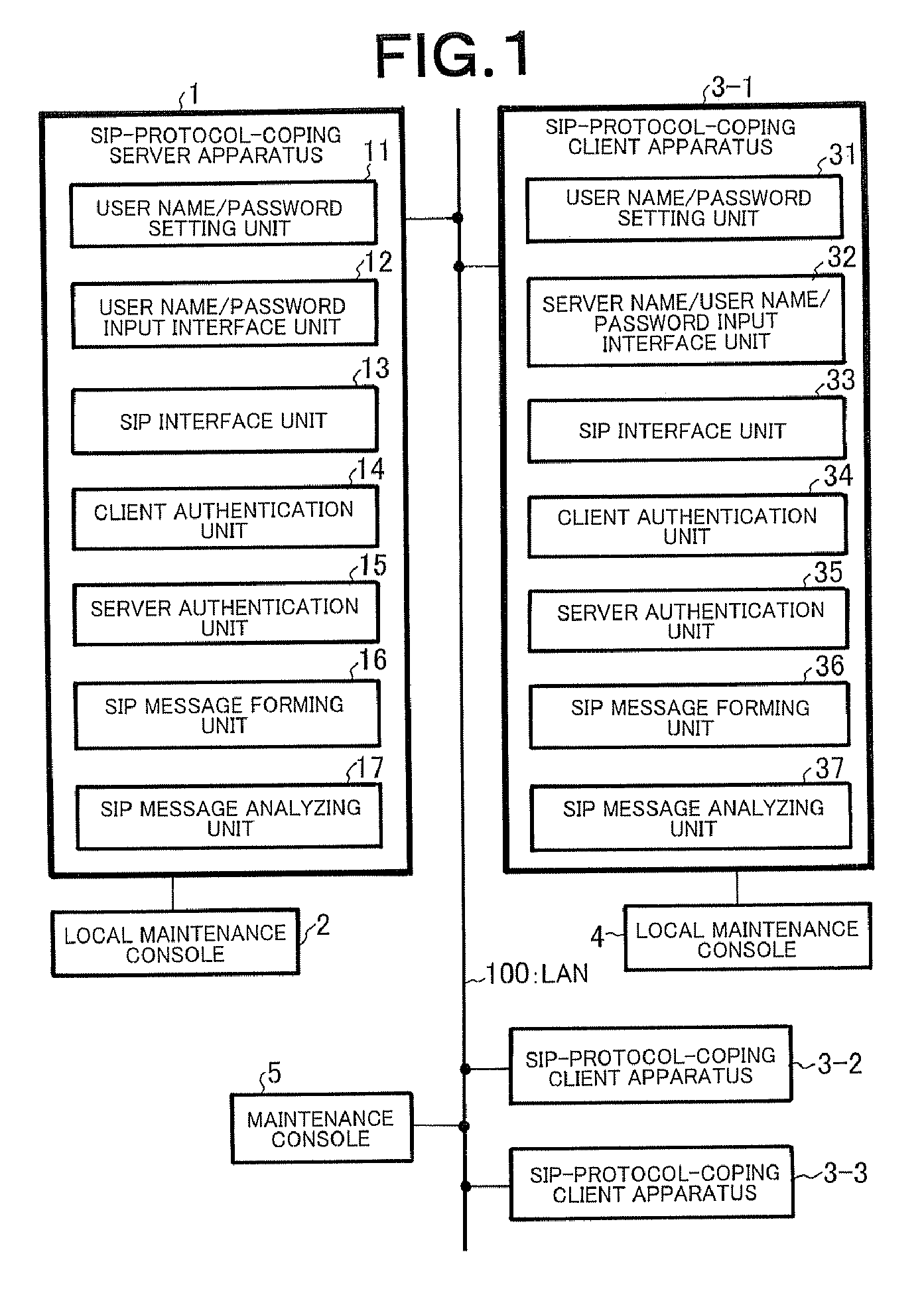Client server distributed system, client apparatus, server apparatus, and mutual authentication method used therein
a client server and server technology, applied in the direction of transmission, program control, instruments, etc., can solve the problems of the inability to prevent harm caused by spoofing or the like of the sip-protocol-coping server apparatus, and the inability to connect to the erroneous sip-protocol-coping server apparatus disadvantageously, so as to reduce the chances of deteriorating security, the chance of lowering
- Summary
- Abstract
- Description
- Claims
- Application Information
AI Technical Summary
Benefits of technology
Problems solved by technology
Method used
Image
Examples
second embodiment
[0109]FIG. 3 is a sequence chart showing an operation of an SIP-protocol-coping client-server distributed system according to a second embodiment of the present invention. Since the client-server distributed system according to the second embodiment of the present invention has the same configuration as that of the client-server distributed system according to the first embodiment of the present invention, a description thereof will be omitted. An operation of the client-server distributed system according to the second embodiment of the present invention will be described below with reference to FIGS. 1 and 3. Processes of a server apparatus 1 and processes of a client apparatus 3-1 shown in FIG. 3 are realized such that programs are executed by CPUs in the server apparatus 1 and the client apparatus 3-1.
[0110]When a user name and a password of the client apparatus 3-1 are input from a maintenance console 5 connected to the server apparatus 1 through a LAN 100 in advance (b11 in FI...
third embodiment
[0114]FIG. 4 is a block diagram showing a configuration of an SIP-protocol-coping client-server distributed system according to a third embodiment of the present invention. In FIG. 4, the client-server distributed system according to the third embodiment of the present invention has the same configuration as that of the client-server distributed system according to the first embodiment of the present invention shown in FIG. 1 except for the maintenance console 5 connected to the LAN 100, the same reference numerals as in the first embodiment denote the same parts in the third embodiment. In the third embodiment of the present invention, when client authentication and server authentication are performed, Challenges (to be referred to as inverse Challenges hereinafter) for server authentication and inverse Digest authentication are generated in client apparatuses 3-1 to 3-3, and formation of a Digest (to be referred to an inverse Digest hereinafter) is formed in the server apparatus 1...
fourth embodiment
[0130]FIG. 6 is a sequence chart showing an operation of an SIP-protocol-coping client-server distributed system according to a fourth embodiment of the present invention. Since the client-server distributed system according to the fourth embodiment of the present invention has the same configuration as that of the client-server distributed system according to the third embodiment of the present invention shown in FIG. 4, a description thereof will be omitted. The client-server distributed system according to the fourth embodiment of the present invention is different from the client-server distributed system according to the third embodiment of the present invention in that authentication achievement is recognized when both client authentication and server authentication are achieved.
[0131]The operation of the client-server distributed system according to the fourth embodiment of the present invention will be described below with reference to FIGS. 4 and 6. Processes of a server ap...
PUM
 Login to View More
Login to View More Abstract
Description
Claims
Application Information
 Login to View More
Login to View More - R&D
- Intellectual Property
- Life Sciences
- Materials
- Tech Scout
- Unparalleled Data Quality
- Higher Quality Content
- 60% Fewer Hallucinations
Browse by: Latest US Patents, China's latest patents, Technical Efficacy Thesaurus, Application Domain, Technology Topic, Popular Technical Reports.
© 2025 PatSnap. All rights reserved.Legal|Privacy policy|Modern Slavery Act Transparency Statement|Sitemap|About US| Contact US: help@patsnap.com



